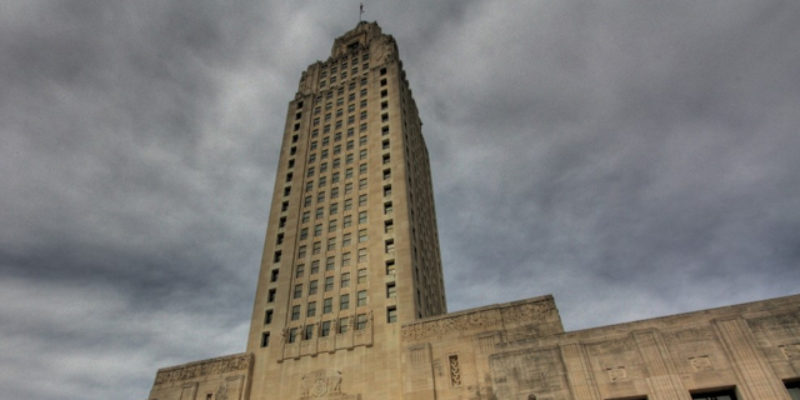(Provided that the Legislature is Smart Enough to Understand and Embrace Them)
In my last blog post, I discussed the problems that the Scarlet T (TAXES!) posed for Republicans seeking to avoid catastrophic cuts of $1.6 billion to an already battered Louisiana fisc. I reported that under the strict guidelines provided by the Americans for Tax Reform, any tinkering with Louisiana’s generous tax incentives could result in being damned with the dreaded Scarlet T if the changes resulted in any increase in net revenue.
Turns out that my assessment of the organization’s position on taxes may have been premature, as Patrick Gleason, the Director of State Affairs for the Americans for Tax Reform, has proclaimed that changing tax credits from refundable to non-refundable is actually a “spending cut.” Mr. Gleason’s recent comments in Forbes were in reaction to Governor Jindal’s budget presented last week proposing the reduction of tax credit outlays of $526 million by converting some refundable tax credits to non-refundable. In other words, the respective companies would only be able to apply the credits to their existing income tax liabilities and not obtain any additional refund payment for the year. The refundable credits affected included the Inventory Tax Credit, Wind and Solar Credit and about a dozen others. Needless to say, the additional funds will take some of the sting, about 30%, from what would’ve been absolutely devastating cuts, but which are still very serious.
The good news, particularly for those concerned about the Scarlet T, is that the refundable to non-refundable plan has been blessed by the Americans for Tax Reform. As mentioned above, Mr. Gleason has stated that “changing a tax credit from refundable to non-refundable is a spending cut, not a tax increase.”
Not that I wish to quibble with the group’s apparent flexibility on non- refundable tax credits, but I’m trying to follow the logic behind the apparent departure from the net revenue test listed in the ATR website. To me it seems that this so-called “spending cut” is not exactly a reduction in state spending, but rather a decrease in the refunds provided by the state, which technically is a net increase in revenue.
Not so, replies Mr. Gleason in his Forbes piece, stating that his position is a “fact” recognized by the federal government, citing the federal Joint Committee on Taxation. Is the federal government actually empowered to decide what a fact is? Mr. Gleason also cites the Washington Examiner in explaining how the refundable portion of a nonrefundable tax credit is actually spending.
“Refundable tax credits allow you to get back your taxes, and then more.
For instance, say your state gives you a tax credit worth the entire cost of sending your kids to ballet class. Say ballet class cost is $1,000. Say your state tax liability was only $800. If the ballet-credit were “refundable,” you’d end up owing zero dollars in state taxes, and then you’d get a $200 check.
So, a refundable tax credit is basically a direct government subsidy.(emphasis added)”
Using this analysis, then it seems like the great bulk of Louisiana tax credits are actually direct government subsidies since the beneficiaries receive considerably more benefits over and above their payment in taxes. Consequently, Louisiana legislators have new options to “reduce spending” by cutting direct government subsidies, without having to worry about the Scarlet T.
Not surprisingly, Louisiana business groups are not quite on board with classifying these changes as spending reductions, since they serve to increase the taxes on their member companies. My response to these groups is that it is a “fact” that these credit changes are spending reductions and not tax increases.
Another revenue option suggested in the Governor’s budget, which was also blessed by the Americans for Tax Reform, is an additional fee directed to higher education institutions that would be offset by a tax credit which would in turn by offset with revenues generated from raising the cigarette tax to the southern average of $100 million. Got that. For example, students would be assessed an extra $2000, that could be offset with a credit, which would be funded by a $100 million cigarette tax increase. But wouldn’t it be a bit simpler to increase the tobacco tax and simply allocate the funds higher education? Not exactly, according to the Americans for Tax Reform, reverting back to the net revenue model and claiming that the increase in taxes has to be offset by a tax credit so that they would be no net revenue. Interesting. However, this analysis does offer the legislature the flexibility to raise as much taxes as it wants provides it enacts an offsetting tax credit.
If none of this makes whole lot of sense to you, I’m in agreement. If Louisiana has to depend on national groups to bail us out of our problems, then God help us. The good news is that I have been in discussion with many of my colleagues in the legislature and we are ready to roll up our sleeves and tackle our fiscal problems, despite the Scarlet T. We might not be as smart as the national group, but we will certainly do our best. Stay tuned!
Advertisement
Advertisement

